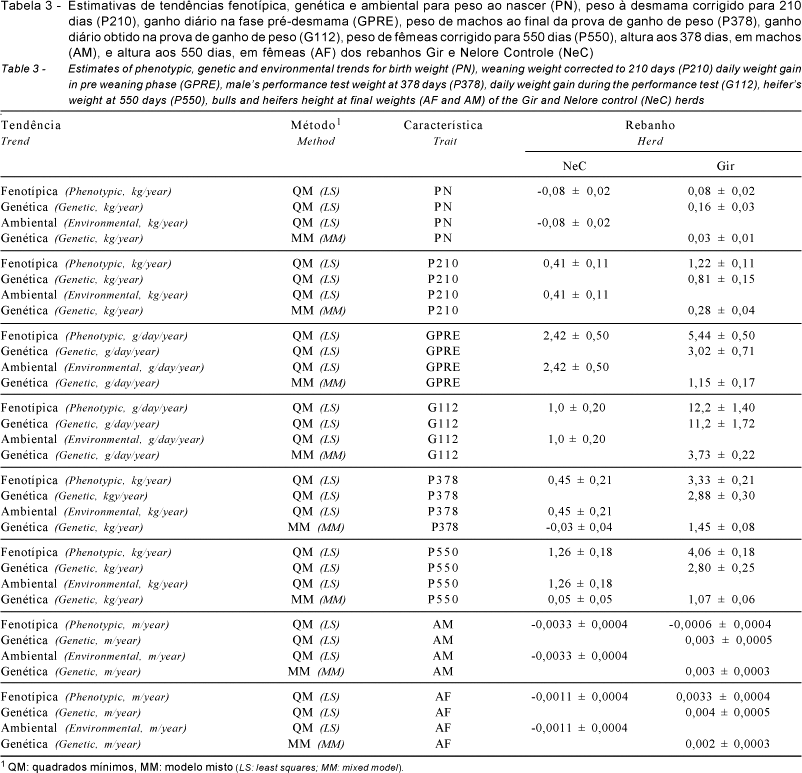Selection for yearling weight has been applied in a herd of Gir breed (80 cows, 6 sires) since 1976 and a Nelore Control herd (60 cows, 4 sires) has been used to evaluate the environmental change. Selection criteria were bull weight at 378 days (P378) in a performance test and heifer weight at 550 days (P550), under grazing conditions. The effective midparent selection differentials for P378 and P550 were 19.5 and 1.8 kg respectively for Gir and NeC, corresponding to 0.72 and 0.07 standard deviation units (s.d.u). The midparent cumulative effective selection differentials for the 2001 offspring were respectively 83.7 and 7.2 kg for Gir and NeC, corresponding to 3.17 and 0.29 s.d.u. The average generation intervals were 5.65 and 5.0 years respectively for the Gir and NeC herds. The individual generation coefficient for the 2001 offspring attained the values of 4.25 (Gir) and 4.65 (NeC). Annual genetic trends estimated by least square methodology in the Gir herd were - PN: 0.16; P210: 0.81 kg/year; GPRE: 3.02 g/day/year; P378: 2.88; P550: 2.80 kg/year; G112: 11.2 g/day/year; AM: 0.003 and AF: 0.004 m/year. Using the mixed model methodology, the estimates for these traits were lower, 0.03, and 0.28 kg/year; 1.15 g/day/year; 1.45 and 1.07 kg/year; 3.73 g/day/year; 0.003 and 0.002 m/year. The realized heritability was 0.69 and 0.64 for P378 and P550, respectively. The results indicated significant genetic response from direct selection based on individual performance information for postweaning weight as well as correlated response in pre and postweaning growth traits in a Gir herd.
beef cattle; control population; generation coefficient; genetic change; selection intensity










